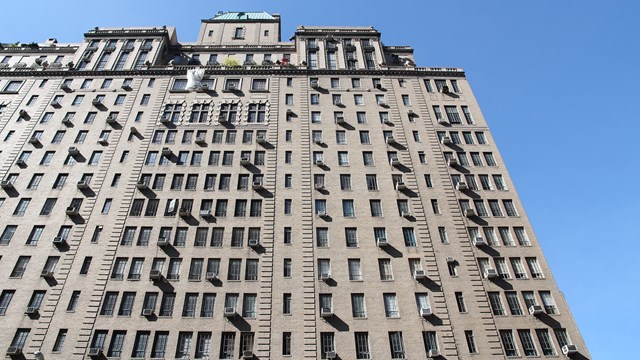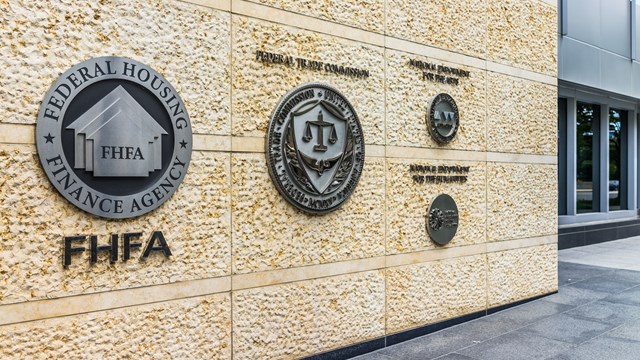The current sessions in both Albany and in the New York City Council are now well under way, and housing-related bills are very much a part of the mix. Some of the bills have been around for years in one form or another, but that doesn’t mean they’re any less relevant—or less controversial.
News From New York City
One of the most controversial acts is the city proposal known as the Fair and Prompt Co-op Disclosure Act, first introduced in 2006 as Intro 119 and sponsored by Councilman Hiram Monserrate. Although the bill is fairly complicated, the simplest description of what it spells out is that it would require co-op boards to provide a reason when they reject a buyer after a specific time. (The bill has now become 119-a, the “Fair Cooperative Procedure Law,” which would, among other things, mandate a standardized admissions form for co-op buildings. Still, some co-op advocates say it is an improvement over the earlier version.)
Established co-op industry groups have, in general, opposed the idea of a mandated written reason for rejection of applicants. Most point out that current law already contains quite a few “protected classes” against whom the board cannot discriminate—categories including race, creed, color, national origin, gender, age, disability, military status, marital status, sexual orientation, family composition and citizenship. They also say it would discourage people from serving on boards.
Marolyn Davenport, senior vice president of the Real Estate Board of New York (REBNY), says, “We feel that there would be so much liability involved that it would just increase lawsuits without going to the already-existing remedies.” As an effort toward fairness, she says, REBNY has already changed its recommended co-op application form to include a statement of purchasers’ rights as well as detailing what remedies and rights purchasers have if they are being discriminated against.
On the other hand, those in the City Council and civic organizations who support the bill, particularly members of minority communities, feel it is necessary because of the persistence of discrimination.
Councilman Lew Fidler, D-Canarsie/Flatlands, a member of the Housing & Buildings Committee, says that in his understanding, the bill’s sponsors are meeting with representatives of the co-op industry to see if a compromise can be reached. “No one wants to have a back door to legalized discrimination,” he says.
At any rate, Fidler adds, in recent months, the main efforts of the Housing & Buildings Committee have not been toward new legislation, but toward safety issues and redefining the tasks and function of the Buildings Department. “There have been so many accidents—especially in the outer boroughs,” he says, and plans that should not have been approved have gone through. One piece of evidence of this controversy, of course, was the resignation of Buildings Commissioner Patricia Lancaster in April, after a series of deadly construction-site accidents, including the devastating collapse of a crane on Manhattan’s Upper East Side.
From Washington and Albany
One legislative change that has already happened on the federal level to help co-op shareholders is the change to what was Section 216 of the Internal Revenue Code, enacted in 1942. That section—commonly referred to as the 80/20 rule—specified that for cooperators to qualify for the same property tax deduction that other homeowners have, the co-op itself had to derive no less than 80 percent of its revenue from the shareholders themselves. This penalized co-ops that derived large amounts of their income from rent paid by commercial tenants in their buildings.
The revision, proposed by Manhattan’s Congressman Charles Rangel and signed into law by President George W. Bush in December 2007, expands the way this requirement can be calculated. Now, co-ops can meet requirements by having 80 percent of their square footage devoted to residential or related purposes, or 90 percent of their expenses dedicated to acquisition, construction, management or maintenance of co-op property for the benefit of the shareholders.
As far as state legislation is concerned, says Mary Ann Rothman, executive director of the Council of New York Cooperatives and Condominiums (CNYC), the most important is extending the 421-a property tax program, an issue she says is “a little bit complicated.”
The program, which has been around since the 1970s, grants “temporary relief” in property taxes to co-op and condo owners. The purpose is to mitigate the disparity between what co-op and condo owners pay and what owners of one-, two- and three-family houses (which are assessed at a lower percentage of market value) pay.
The exemption, however, applied for by the developer, usually benefits new construction, and is given on the basis of the development as a whole. Although the 421-a property tax incentive program is a state measure, it only affects New York City, so a “home rule” bill from the City Council is needed.
The bill was “supposed to be short-term,” and has been extended several times, says Rothman. “The city was supposed to come up with a long-term plan, but hasn’t done so yet.” The exemption currently would “sunset” on June 30, 2008, so co-op advocates are looking for a revision and/or extension.
In the meantime, opponents of 421-a question how many of the exemptions help the middle-income co-op and condo owners the measure was originally meant for, and point to the revenue that has been lost to the government because of it.
Councilman Fidler says the City Council has passed a home rule measure already [actually, in 2006] and it has gone to the state Legislature, which has “re-jiggered it” and is debating it. Changes have to be made that reflect the recent changes in the housing market, he added.
Bill of Rights and Mitchell-Lama
Also in Albany, one bill that has been kicking around for a long time (in this case about 10 years) is a condo and co-op “bill of rights” sponsored by Assemblyman Vito Lopez—now the Kings County Democratic chair. This bill would require condo and co-op boards to hold elections by secret ballot, fill vacancies in a timely fashion, make financial statements available to owners, post the results of elections publicly, and more.
Of this particular bill, Rothman said that it “tries to go into too many directions— it’s enormous and diverse.” Among the objections her group has raised involve one of the provisions in an earlier version of the bill mandating that minutes of board meetings be distributed within three days of the meeting. However, she reminds us, “boards don’t even approve of its minutes until the next meeting.”
Yet another concern of New York City residents is the gradual phasing-out of Mitchell-Lama subsidized developments—both co-op and rental. Although the Mitchell-Lama program came into effect as a result of state legislation, it hasn’t seen much activity in the legislative arena nowadays—the powers that be see the problem of buildings “aging out” of Mitchell-Lama as one to be solved on a case-by-case basis.
There have, however, been some pieces of legislation dealing with Mitchell- Lama communities. Two of these were introduced in the City Council two years ago to provide tax abatements for energy conservation and electric submetering in these developments (presumably to make their financial load lighter). A bill in the state Assembly, also introduced two years ago, would ensure that money raised from “buyouts” of Mitchell-Lama developments be earmarked for new affordable housing.
“There are a lot of Mitchell-Lama projects,” says Davenport, “that are not in ‘hot’ market areas and are not subject to any kind of desire to buy out. But they do need initial infusions of capital, and the city has done a lot to work with them.”
Co-ops Here, Condos Everywhere Else
What is the attitude in Albany toward co-op and condo legislation? Historically, there were few co-ops and condos outside New York City and its suburbs, and legislators from other areas such as Buffalo or Syracuse just deferred to their downstate colleagues when issues arose concerning either type of housing.
That, however, has changed. Nowadays, says Rothman, “Throughout the state, we’re seeing more and more condos and homeowner associations. This kind of community homeownership gets the attention of lawmakers.”
“There hasn’t been a lot of legislative activity in Albany related to co-ops and condos,” says Davenport of REBNY. “There haven’t been a huge number of conversions. There has been a lot of new condo construction, but people view that as a good thing.”
Making Opinions Known
Whether they’re in Albany or at City Hall, legislators don’t make their decisions alone. They must take into account not only their constituents’ wishes, but those of industry groups and “special interest” groups such as unions and civic organizations.
“I try to meet with [all the interest groups], and view this as an opportunity to educate myself,” says Fidler. The councilman adds that he seeks to hear all points of view so that near the end of the legislative session, he’ll be comfortable taking a position on a particular bill.
“How do we make our wishes known?” asks Davenport. “We send letters, testify, anything to be heard.”
As for the CNYC, says Rothman, “We monitor pending legislation, we try to meet with lawmakers and their staff. Most important of all is grass-roots activity. When a very serious issue like the written rejections proposal came up, we activated our membership.”
A spokeswoman for another organization, Mona Shyman, vice president of the Federation of New York Housing Cooperatives and Condominiums (FNYHC), says her organization’s secret weapon is its very active executive director, Greg Carlson. “He goes to anything that has to do with co-ops and condos—seminars, meetings, he goes to Albany, he goes to Washington. He makes our opinions known.”
Making those opinions known may have been one of the reasons that a proposed double-digit increase in water bills was defeated, says Shyman, (although another such increase has been proposed anew for this year).
As for the question of lobbyists—who are defined as people who are paid to make contact with legislators and make known the points of view of particular organizations or interest groups—Rothman says, “We work with lobbyists. The job of our lobbyists is to make sure we see all legislation pertaining to housing, and to make our wishes known to legislators.”
According to Shyman, one odd criteria of many housing-related bills before the Assembly is that they are limited to “communities of a million people or fewer,” thus eliminating New York and making special New York City-related legislation necessary. For example, Shyman says, in other parts of the state, tables containing fire safety information must be posted on apartments’ front doors. But here, of course, such information is only posted in the common hallway on each floor.
A city the size of New York City has its own gravitational pull when it comes to legislation and governance, it seems. What may work well for Westchester or the bedroom communities of Long Island might not be a good choice for the high-rises of Manhattan or Brooklyn’s brownstones. The challenge of government throughout the state and city is striking a workable balance between constituencies and crafting laws and legislation that serve the majority fairly and equitably.
Raanan Geberer is a freelance writer and editor living in New York City.







Leave a Comment